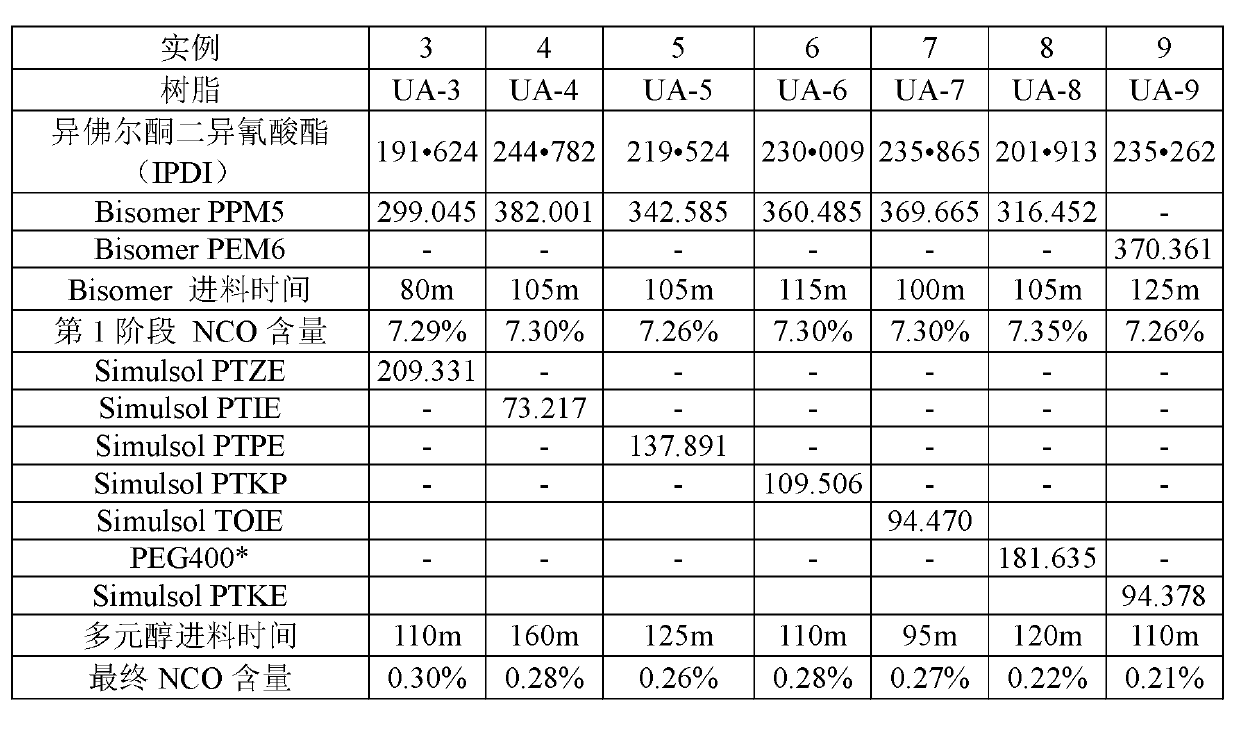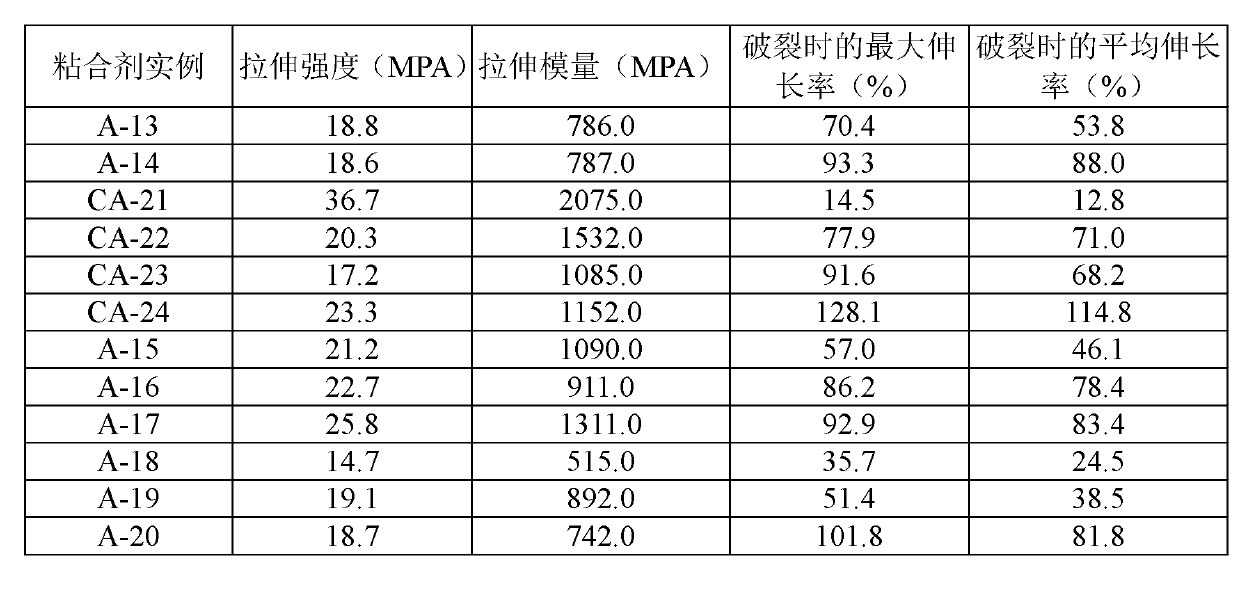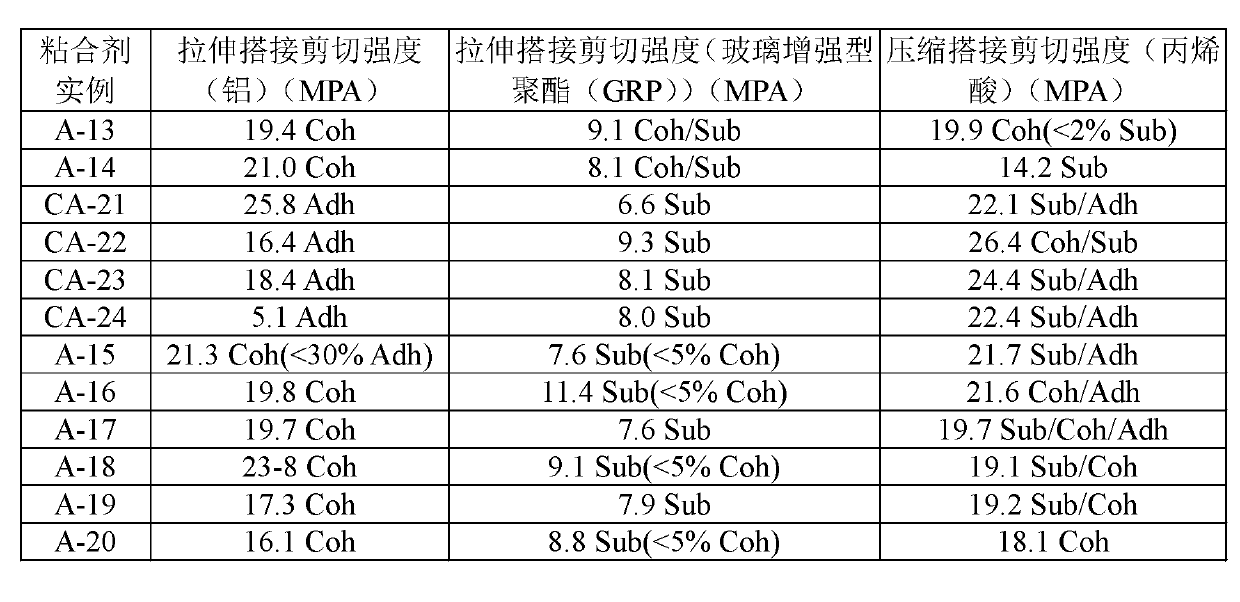Methacrylate-based adhesive compositions
An acrylate and urethane technology, applied in the direction of ester copolymer adhesives, polyurea/polyurethane adhesives, adhesive types, etc., can solve the problem that the joints of bonded aluminum cannot withstand corrosive environments, Issues such as adhesive properties not recorded
- Summary
- Abstract
- Description
- Claims
- Application Information
AI Technical Summary
Problems solved by technology
Method used
Image
Examples
Synthetic example 11
[0253] Toluene 2,4-diisocyanate used in Synthesis Example 11 was 95% purity grade toluene 2,4-diisocyanate supplied by Sigma Aldrich Laboratories supplier (Greenhams, Dorset, UK).
[0254] Neoprene WM-1 and Neoprene WB are general purpose polychloroprene available from DuPont Performance Elastomers.
[0255] Neoprene AD-20 is an adhesive grade polychloroprene available from the same source.
[0256] Tyrin® 3615P is a chlorinated polyethylene polymer available from DuPont Dow Elastomers.
[0257] Nipol 1072 is a carboxylic acid functional butadiene-acrylonitrile copolymer available from Zeon Chemicals.
[0258] The phthalic polyester resins used in Comparative Example C22 were diethylene glycol, Pergaquick A150 (an ethoxylated amine available from Pergan GmbH), phthalic anhydride and maleic anhydride Reaction product at 5.3% equivalent diol excess. The amount of Pergaquick used was 1.4 mole % of the diol moiety in the resin, and the molar ratio of phthalic anhydride:maleic a...
Synthetic example 1
[0280] Urethane acrylate resin UA-1 was prepared by reacting sorbitol, ε-caprolactone, isophorone diisocyanate (IPDI) and 2-hydroxyethyl acrylate. Its composition is disclosed on page 10 of European Patent No. 0056713A.
[0281] Charge 1.0 moles of sorbitol and 18.0 moles of ε-caprolactone into a suitable reaction vessel and heat to 90°C to 100°C with stirring. To the resulting cloudy homogeneous dispersion was added 0.2% p-toluenesulfonic acid. The exothermic reaction started almost instantaneously and the temperature increased violently, reaching 140°C to 150°C.
[0282] The batch was allowed to cool naturally for 15 minutes before vacuum stripping. Less than 2% of the load weight is removed.
[0283] After stripping, the temperature was adjusted to 100°C to 110°C and 3.5 moles of isophorone diisocyanate were added. A slight exotherm started and the batch temperature was allowed to rise to 120°C to 130°C, at which point the temperature was controlled by cooling.
[0284...
Synthetic example 2
[0286] A continuously stirred stainless steel reactor was charged with 42.452 kg isophorone diisocyanate (IPDI) along with 28 g inhibitor T, 19 g benzoquinone and 37 g methylhydroquinone (sometimes called methylhydroquinone) at 460 g solution in methyl methacrylate. This mixture was allowed to warm to 45°C and a solution of 10 g Fascat 4202CL in 442 g methyl methacrylate was added. 66.542 kg of Bisomer PPM5 was gradually fed into the reactor and the exotherm of reaction raised the temperature to 61.5°C. This feed took 90 minutes to complete. After a further 30 minutes at 61.5°C, the isocyanate content was found to have reached 6.8%. The reactor temperature was raised to 80.0°C and a solution of 19 g Fascat 4202CL in 433 g methyl methacrylate was added. Then 17.033 kg Simulsol PTKE was gradually fed into the reactor over a period of 75 minutes, keeping the temperature of the reactor between 80°C and 85°C. Any residual Simulsol PTKE remaining in the feed vessel was then flus...
PUM
| Property | Measurement | Unit |
|---|---|---|
| Tensile modulus | aaaaa | aaaaa |
Abstract
Description
Claims
Application Information
 Login to View More
Login to View More - R&D
- Intellectual Property
- Life Sciences
- Materials
- Tech Scout
- Unparalleled Data Quality
- Higher Quality Content
- 60% Fewer Hallucinations
Browse by: Latest US Patents, China's latest patents, Technical Efficacy Thesaurus, Application Domain, Technology Topic, Popular Technical Reports.
© 2025 PatSnap. All rights reserved.Legal|Privacy policy|Modern Slavery Act Transparency Statement|Sitemap|About US| Contact US: help@patsnap.com



